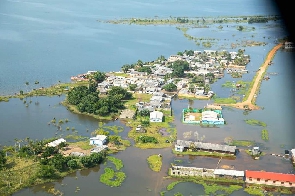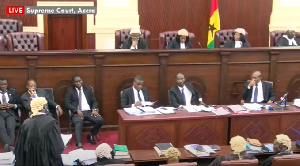Opinions of Sunday, 22 October 2023
Columnist: Dr. Elikplim Kwabla Apetorgbor
Ensuring safety and mitigating flooding in Akosombo Dam management
To avoid flooding and manage water levels effectively, operators of the Akosombo Dam should follow best practices in dam management such as:
Hydrological Assessments
Regularly monitor and assess hydrological data, including rainfall patterns, river flow, and weather forecasts to anticipate potential floods.
Early Warning Systems:
Implement early warning systems that provide advance notice to downstream communities and authorities in case of impending releases or floods.
Reservoir Management:
Maintain the dam reservoir at appropriate levels, ensuring that it has sufficient capacity to handle excess water during heavy rains while avoiding unnecessary releases that can lead to flooding downstream.
Spillway Maintenance:
Ensure the spillway and gates are in good working condition and conduct routine inspections and maintenance to prevent blockages or malfunctions.
Emergency Response Plans:
Develop comprehensive emergency response plans that outline procedures for flood management, including evacuation plans for downstream communities.
Communication:
Establish effective communication channels with local authorities, communities, and relevant stakeholders to coordinate flood response and disseminate critical information.
Community Engagement:
Engage with local communities to raise awareness about the dam's operations, potential flood risks, and necessary safety measures.
Environmental Impact Assessment:
Continuously assess and mitigate the environmental impact of the dam, ensuring that operations do not exacerbate flooding or harm the ecosystem.
Data Sharing:
Share hydrological and operational data with relevant government agencies and international organizations to facilitate coordinated flood management efforts.
Sedimentation Management:
Implement sedimentation management strategies to prevent sediment buildup within the reservoir, which can reduce storage capacity and increase flood risks.
Climate Change Adaptation:
Consider the impact of climate change and adapt dam operations accordingly. Rising global temperatures may lead to more extreme weather events and increased flood risks.
International Cooperation:
Collaborate with neighboring countries and international organizations to manage transboundary river systems and mitigate the risk of downstream flooding.
Maintenance and Upgrades:
Regularly maintain and, if necessary, upgrade the dam's infrastructure to meet modern safety standards and accommodate changing environmental conditions.
Public Awareness Campaigns:
Conduct public awareness campaigns about the potential risks and safety measures related to the dam to ensure that the local population is well-informed.
Independent Safety Reviews:
Periodically seek independent safety reviews and assessments of the dam's operations and safety measures.
VRA must prioritize safety, community well-being, and environmental protection while ensuring efficient hydroelectric power generation. Continuous monitoring, maintenance, and adherence to best practices are essential to prevent flooding incidents and minimize their impact.
The writer, Dr. Elikplim Kwabla Apetorgbor is with Power Systems Economist & CEO of Independent Power Generators Ghana













